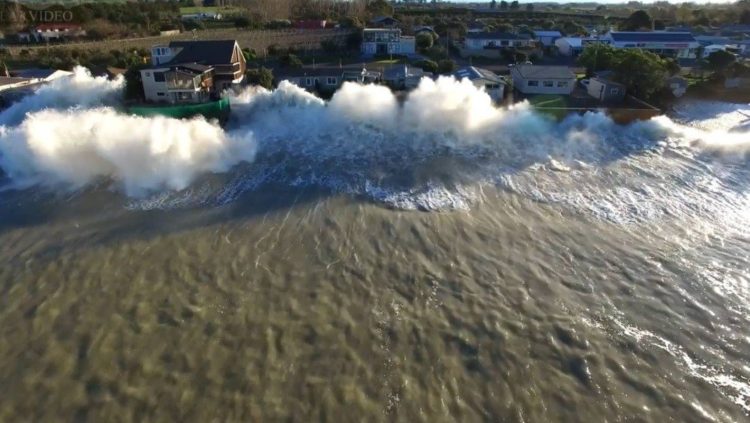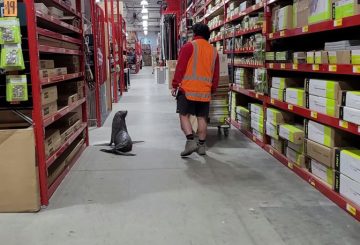Ang pagtaas ng mga banta ng pagbabago ng klima, tulad ng pinatindi na bagyo, wildfires, at pagtaas ng antas ng dagat, ay nag-apoy ng isang debate sa New Zealand tungkol sa pinamamahalaang pag-urong ng mga komunidad na may mataas na panganib ng mga natural na sakuna. Narito ang isang maigsi na pangkalahatang-ideya ng mga pangunahing paninindigan ng mga partidong pampulitika:
- Green Party:
- Sinusuportahan ang batas para sa pinamamahalaang pag-urong.
- Naniniwala sa ibinahaging gastos na tindig ng Pamahalaan, mga konseho, at mga may-ari ng bahay para sa mga pamilyang kailangang lumipat mula sa mga lugar na may mataas na peligrosong.
- Ang mga tagapagtaguyod para sa paglilimita sa pag-unlad sa mga zone na madaling kapitan ng panganib at pagtiyak na ang mga ulat ng konseho LIM ay may kasamang mga babala sa panganib para sa mga potensyal na mamimili sa bahay.
- Tumututol sa seguro na sinusuportahan ng gobyerno.
- Partido ng Paggawa:
- Sinusuportahan ang isang pinamamahalaang retreat act.
- Hindi tinukoy ang mga responsibilidad sa pagbabayad o mga paghihigpit sa pag-unlad na nasa panganib.
- Sinisiyasat ang ilang uri ng saklaw para sa kapag ang mga pribadong tagaseguro ay humugot ngunit hindi malinaw na ipinahayag ang paninindigan nito sa seguro na sinusuportahan ng gobyerno.
-
- Pinamamahalaan ng mga back ang batas sa pag-urong.
- Mga tagapagtaguyod para sa pagbabahagi ng gastos sa gitna at lokal na pamahalaan at mga may-ari ng bahay para sa mga paglilipat ng komunidad.
- Sinusuportahan ang mga limitasyon sa pag-unlad sa mga lugar na may mataas na peligroso at naniniwala sa pagpapaalam sa mga mamimili sa bahay tungkol sa mga potensyal na panganib.
- Iniendorso ang seguro na sinusuportahan ng gobyerno.
- Nag-lobi para sa isang “equity-based adaptation fund” para sa mga hindi nakaseguro na biktima ng sakuna at nagmumungkahi ng $1B Māori Taiao Relief fund para sa pagpapanumbalik pagkatapos ng mga natural na sakuna.
- Pambansang Partido:
- Sinusuportahan ang isang pinamamahalaang batas sa pag-urong.
- Nagmumungkahi ng ibinahaging responsibilidad sa Pamahalaan, mga konseho, at mga may-ari ng bahay para sa mga gastos sa paglilipat.
- Mga tagapagtaguyod para sa babala sa mga potensyal na mamimili ng bahay tungkol sa mga mapanganib na lugar at naniniwala sa paghihigpit sa karagdagang pag-unlad sa mga lugar na napili para sa pagbili ng Bagyo Gabrielle.
- Sumasalungat sa mga bagong regulasyon upang paghigpitan ang pag-unlad sa iba pang mga nasa panganib na zone at seguro na sinusuportahan ng gobyerno.
- Act Party:
- Hindi binabalik ang isang pinamamahalaang batas sa pag-urong.
- Naniniwala na ang Pamahalaan, mga konseho, at mga may-ari ng bahay ay dapat magbahagi ng mga gastos sa paglilipat.
- Sinusuportahan ang paghihigpit sa pag-unlad sa mga lugar kung saan inaalok ang pagbili ng Cyclone Gabrielle.
- Sumasalungat sa mga babala sa panganib para sa mga mamimili sa bahay, karagdagang mga paghihigpit sa pag-unlad sa mga nasa panganib na zone, at seguro na sinusuportahan ng gobyerno.
- Nagmumungkahi ng pag-uulit ng kasalukuyang Batas sa Pamamahala ng Mapagkukunan na pabor sa bagong batas sa pag-unlad ng kapaligiran at lunsod.
Sa pamamagitan ng Pāti Māori:
Ang isyu ay nananatiling kontrobersyal habang nakikipagtalo ang New Zealand sa nalalapit na mga hamon ng pagbabago ng klima, na pinipilit ang bansa na isaalang-alang ang mga mahihirap na desisyon para sa mga komunidad
na may panganib.




























































